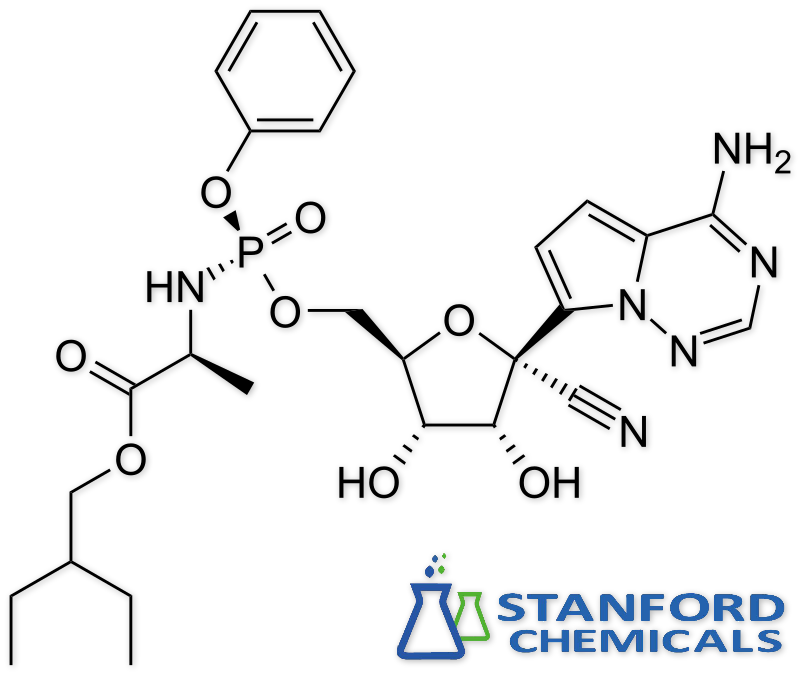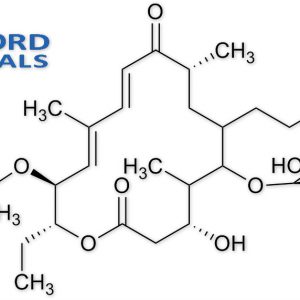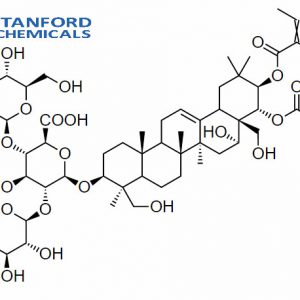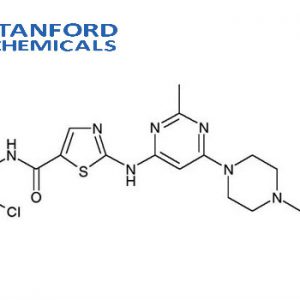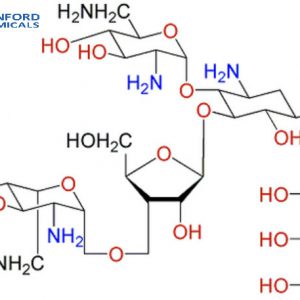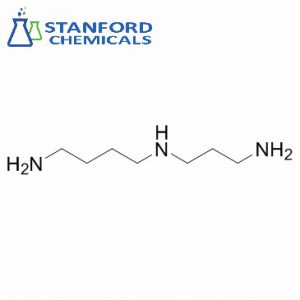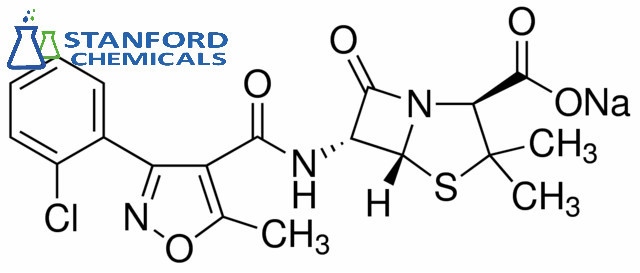- Home
- Pharmaceuticals
- (Discontinued) 040-000-286 Remdesivir for the Treatment of Covid-19
(Discontinued) 040-000-286 Remdesivir for the Treatment of Covid-19
Discontinued
| Synonyms | GS5437 |
| Key words | COVID-19, against viruses |
| Related products | Hydroxychloroquine sulfate, Losartan Potassium |
Remdesivir works by inhibiting the viral RNA polymerase, leading to premature termination of viral RNA synthesis. This action disrupts the replication cycle of the virus, helping to control and reduce the viral load in infected patients.
- Description
Description
Remdesivir Specifications
| Product Name | Remdesivir |
| CAS Registry Number | 1809249-37-3 |
| Molecular Formula | C27H35N6O8P |
| Molecular Weight | 602.585 g·mol−1 |
| Purity | >99.9 % |
| Package | 1kg-25kg; 1 g, 20g |
| Solubility | DMSO : ≥ 125 mg/mL (207.44 mM) |
| Shelf life | 2 years |
| Functions | Treatment of COVID-19 infection |
Remdesivir Description
Remdesivir (development code GS-5734) is a novel antiviral drug in the class of nucleotide analogs. It is a nucleoside analogue, with effective antiviral activity, with EC50s of 74 nM for SARS-CoV and MERS-CoV in HAE cells, and 30 nM for murine hepatitis virus in delayed brain tumor cells. Remdesivir is highly effective in the control of 2019-nCoV (COVID-19) infection in vitro.
Remdesivir is a nucleotide prodrug of an adenosine analog. It binds to the viral RNA-dependent RNA polymerase and inhibits viral replication by terminating RNA transcription prematurely.
How does Remdesivir work as an antiviral?
Remdesivir is an antiviral medication that was originally developed to treat Ebola virus infections but has gained significant attention for its use against SARS-CoV-2, the virus responsible for COVID-19. Its mechanism of action involves the inhibition of viral replication.
Mechanism of Action
- Prodrug Activation: Remdesivir is a prodrug, meaning it undergoes metabolic conversion within the body to become its active form. Once administered, it is metabolized to GS-441524, which is then phosphorylated to form the active nucleoside triphosphate, GS-443902.
- RNA Chain Termination: The active form of remdesivir resembles adenosine triphosphate (ATP), one of the building blocks of RNA. During viral replication, the viral RNA-dependent RNA polymerase (RdRp) enzyme incorporates remdesivir’s active triphosphate form into the nascent viral RNA chain in place of ATP.
- Delayed Chain Termination: Once incorporated into the growing RNA strand, remdesivir causes premature termination of RNA synthesis. This happens because the modified nucleotide cannot form a proper bond with the next nucleotide, effectively halting the replication process. This chain termination occurs after a few additional nucleotides are added, leading to incomplete viral RNA strands.
- Reduction of Viral Load: By inhibiting RNA synthesis, remdesivir reduces the amount of viral RNA produced within infected cells. This decrease in viral replication helps to lower the viral load in the patient, thereby aiding the immune system in controlling and eventually eliminating the infection.
Remdesivir Applications
Remdesivir is a potent antiviral agent. Remdesivir inhibits murine hepatitis virus (MHV) with an EC50 of 30 nM, and blocks SARS-CoV and MERS-CoV in HAE cells with EC50s of both 74 nM in HAE cells after treatment for 24 h.
Reference:
- Agostini ML, et al. Coronavirus Susceptibility to the Antiviral Remdesivir (GS-5734) Is Mediated by the Viral Polymerase and the Proofreading Exoribonuclease. MBio. 2018 Mar 6;9(2). pii: e00221-18.
- Wang M, et al. Remdesivir and chloroquine effectively inhibit the recently emerged novel coronavirus (2019-nCoV) in vitro. Cell Res. 2020 Mar;30(3):269-271.

